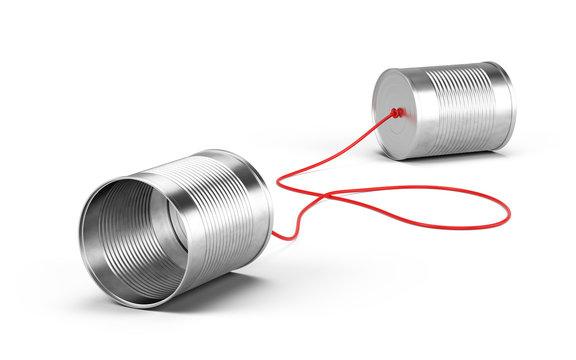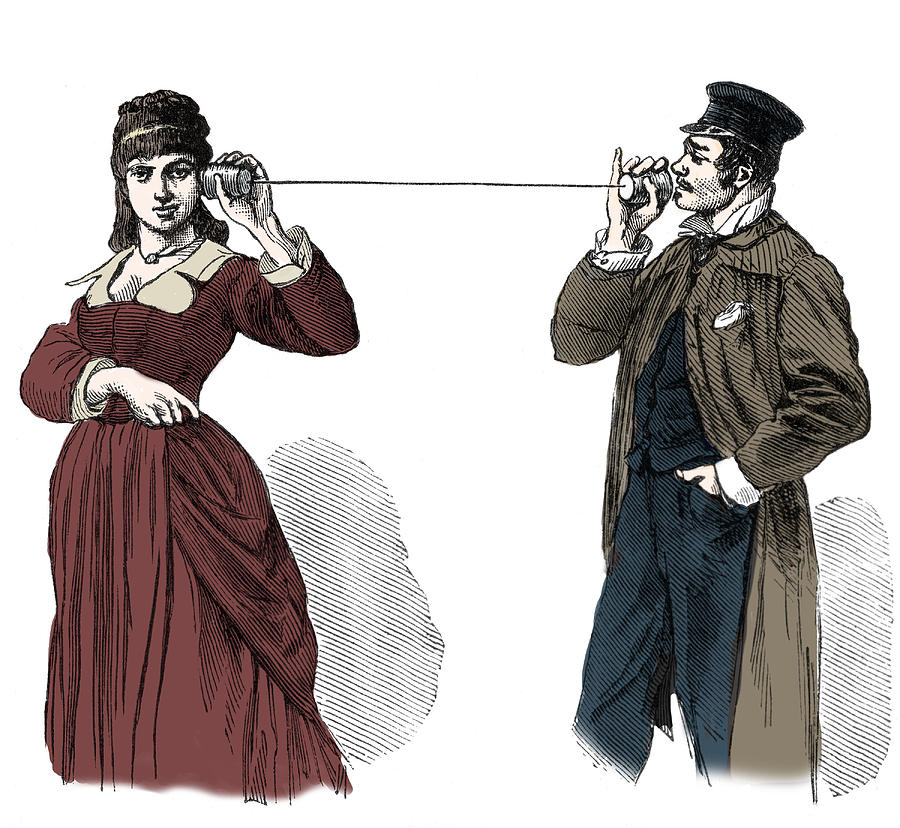
Posted on 07/07/2024 4:44:37 PM PDT by DallasBiff

1950s
The design of the telephone didn’t change much from the ’40s to the ’50s, but the mechanics of it sure did. If you look closely, you’ll notice that the numbers and letters are placed around the rotary so that people could view them more easily when dialing, and it also had an adjustable volume control. This style phone is the Western Electric model 500 Rotary. It was designed by Henry Dreyfus and was used as the Bell System’s mainstay telephone from the 1950s through the 1980s.
(Excerpt) Read more at rd.com ...
I also understood rotary phones, from watching Hitchcock movies. Dial M for Murder, The Birds, etc.
You could get trapped in a phone booth. You have to be home to wait for calls. Operators come on with creepy voices. You don’t know who’s calling if you don’t answer. And the ring could make you jump out of your skin!
On the other hand, with a rotary phone you could call a doctor and he would come to your house.


Touch-Tones were analog.
That is very misleading. Rotary phones sent a sequence of electrical pulses to the CO switch either, crossbar or step-by-step. Both switching systems existed over a century ago, long before digital computers were created.
Touch Tones or DTMF (Dual Tone Multiple Frequency) telephone signaling was planned to be used on the old analog crossbar or step-by-step switches, but were used in the transition into digital frontend telephone switches like the 1ESS (Number One Electronic Switching System) and all the electronic switches that followed.
Each tone of a touch phone key was a combination of two frequencies together.
DTMF Frequencies | |||||||||||||||||||||||||
If you pressed the number one, the dual tone of 1209 Hz and 697 Hz was sent to the Central Office and is detected by the switch. Since analog switching goes back 125 years and rotary phones used electrical pulses like an old fashioned telegraph key, they are considered analog technology and the DTMF phones are considered digital because they more connected to the modern digital world. |
That’s why area codes with 1 in the middle were assigned to areas which got the highest call volume. Areas with the highest call volume got lower numbers for the other two digits. Chicago got 312 and NY got 212, LA got 213.
DC, on the the other hand, got 202. Virginia got 703 (for the entire state).
It was a lot quicker for the switching equipment to set up a call to a 212 area code than to a 703 area code.
It doesn’t matter these days, but it did when area codes were first assigned.
I live in Northern Virginia about 25 miles from the Pentagon as the crow flies, and I have never heard about the existence of any telephone manufacturing plant here, or any Western Electric plant at all for that matter.

I was so scarred by having to redial entire phone numbers because of one error, especially numbers with lots of 7s, 8s, 9s and 0s, that I STILL feel like I’m getting away with something every time I dial a phone number with lots of high digits.
And it WAS GOOD ENOUGH FOR US!!!
Other than business phones I never saw a push button phone in use before the 80’s. I think that they were more used in the cities where touch tone was available at an earlier time. But country folks did not have them.
The dialing output of a rotary is digital. Just a bit more sophisticated than the wall switches installed in my house in the 50s.
The dialing output of a touchtone was analog.
We used to be able to “dial” a rotary with a lock on the dial by carefully tapping the switch under the handset.
Ok... From Brave search engine.
Were rotary phones digital?
Rotary phones, also known as rotary dial phones, were not digital in the modern sense. They used an analog system to transmit phone numbers. Here’s how it worked:
The rotary dial had a mechanical mechanism that converted the rotation of the dial into electrical pulses.
Each number on the dial was connected to a specific electrical circuit, which generated a unique pulse pattern when the dial was rotated.
The pulse pattern was transmitted over the phone line to the telephone exchange, where it was decoded and used to connect the call.
The pulse pattern was not a digital signal in the classical sense, as it was not a series of discrete 0s and 1s. Instead, it was an analog signal that represented the sequence of numbers dialed.
In contrast, modern digital phones use a digital signal to transmit phone numbers, which is a series of 0s and 1s that represent the digits of the phone number. This allows for more efficient and reliable transmission of phone numbers, as well as the ability to transmit additional information such as text messages and data.
Yes, I've done that before just to prove it to myself.
I stick with what I posted. I was in the industry for 40 years, as a Staff Sergeant in the USAF and then with ITT, Sprint, MCI and retired after 31 years Verizon Business as a Senior Maintenance Technician and the last last ten years as Program and Project Manager. Rotary is analog and Touch Tone is the transition to digital.
Rotary vs. Modern Phones: A Contrast in Technology
Fast forward to today, and the contrast between rotary phones and modern smartphones couldn’t be starker. Where rotary phones were limited to making calls (and later, basic features like redial or hold), smartphones are mini-computers. They keep us connected not just through calls, but through text, email, social media, and a multitude of apps.
Smartphones also use digital technology as opposed to the analog system of rotary phones. This shift has allowed for clearer sound quality, faster connections, and the ability to send data alongside voice signals.
“We had a wall phone with a party line at one time. If you picked up the receiver while the other party was on the phone, you could listen to their conversation. We were taught to hang up right away of course. Good training.”
____________________________________________________
My great aunt picked up the party line to hear 2 people talking. She wanted to talk to one of them so she listened for a couple of minutes. All the while my great uncle sat and watched her while he rocked in the old rocker. He watched and rocked, and rocked and watched. Then he said “it’s gonna chime” just the second before the cuckoo clock went off. She quickly hung up the phone, mad at my great uncle. Since they were the only ones with a cuckoo clock, she was caught snooping! I don’t think my mother ever laughed so hard!
Great story.
You cranked it a certain way to get one of the phones on your party line, or another way to get the Operator who would connect you with another number that you spoke to her on one of the other party lines.
To place a long distance call, you had to go down to the Operator's office and have her connect to the Central Operator, who would set up the call according to the routines for whatever kind of phone system or receiver was on the other end.
People of either party line could pick up their phone and listen, which those of common courtesy didn;t, but you watched what you said anyway, because the true addictive gossipers would pick up onit anyway, without feeling any shamefor their inconsiderate manners.
Sometime in those days I memorized the radio tune :
"When The Lightnin' Struck The Coon Creek Pary Line" (click here)
Lyrics:
> 'Twas a sultry summer'sday,After the war ended, the phone company built a new entryless building and install an automatic dialing system with a dial handphone for every number in the little village and its farms about.
We'd just finihed makin' hay.
I was drivin' into town for binder twine'When the wind began to roar
and the rain began to pour,
and the lightnin' struck the Coon Crick party line!Hetty said Aunt Lizzie swore
When it knocked her to the floor. She was sure it knocked her ribs loose from her spine;
But it seems that Old Aunt Liz
Lost her gall'pin rheumatiz
When the lightnin' struck the Coon Crick party line.Then the pole got splitten?? through
And the line was snapped in two
Andit fell among the wild cucumber vine.
It was sure an awful thing,
Not a single phone could ring
When the lightnin' struck the Coon Crick party line.
our number was 249, no dial, party line
it changed to Circle 6 6810
I think those old rotary phones were incapable of dialing “800” numbers.
Everything is worse, wimpier, less effective ... dishwashers, washing machines, toilets, everything.
Disclaimer: Opinions posted on Free Republic are those of the individual posters and do not necessarily represent the opinion of Free Republic or its management. All materials posted herein are protected by copyright law and the exemption for fair use of copyrighted works.